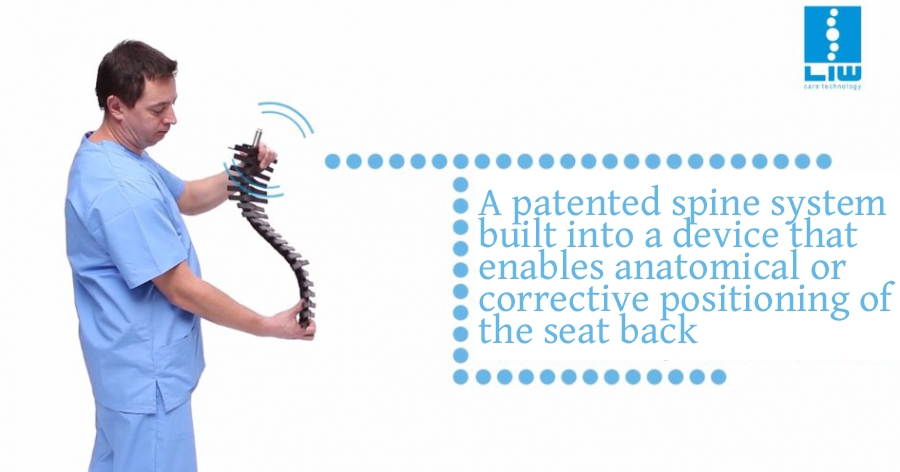The process of obtaining an upright body posture, called the upright positioning, is closely related to the replacement of the supporting functions of the upper limbs with manipulation functions. A child naturally strives to achieve an upright posture by shaping individual muscle groups. Uprighting occurs when the pelvis is stable and the developed muscles position the sacrum between the hip bones.
Usually positioning starts with a slight inclination (30-45 degrees) and lasts about 5 minutes. You should pay attention to the functionality of the riser. It is important not only to be able to achieve the desired upright angle from zero to full extension - depending on the rehabilitation stage, but also the simplicity of its implementation. The possibility of upright standing by one person operating the patient is of great importance as it facilitates the frequency of its carrying out, thus influencing the effectiveness of the therapy. We run it several times a day. In many diseases where long-term lying has been recommended so far, frequent upright positioning significantly accelerates recovery. It is related to the gradual preparation of the circulatory system to work in changed conditions. Thanks to the upright position, we can develop the work of the circulatory, respiratory, skeletal, muscular, excretory, digestive and nervous systems. This is especially important in children and adolescents because it affects the development of these systems in the growth phase and prevents the development of many disorders, such as:
- inhibiting the proper development of bone and muscle systems,
- osteoporosis,
- no proprioceptive signaling (no building of deep feeling)
- insufficient lung ventilation,
- residual phlegm,
- greater susceptibility to respiratory infections,
- constipation,
- urinary system anomalies,
- slowing down the rehabilitation process,
- the occurrence of contractures in the hip joints and lower limbs.
Patients who have permanently lost the ability to maintain the vertical position of the body, standing upright is a necessary requirement in prophylaxis. When selecting the equipment, the patient's individual needs resulting from the anatomical structure, the need for adjustments in support and stabilization, especially in such diseases as: cerebral palsy, meningeal hernia or muscular dystrophy, are important. In this case, attention should be paid to the positioning of the patient not only in an upright position, but also in a sitting position. Thanks to this, you can minimize the occurrence of scoliosis or other posture defects or slow down their progress. In many cases, the use of orthopedic corsets is difficult or even impossible. During the day, the patient is in a sitting position and, using the device, has the opportunity to participate in such daily activities as: playing, learning, eating, maintaining the correct sitting pattern. You can build the cognitive function and activate the child.
To sum up: upright positioning allows you to prepare the patient, especially after a long stay in a lying position, to sit down, walk or move freely. It is one of the stages of the rehabilitation process and standing stands facilitate its implementation. They build a cognitive function and facilitate the management and education of the above-mentioned group of patients. They improve the existence of patients who do not expect to get upright or sit up on their own. They act prophylactically when the use of other orthopedic equipment is excluded.


 Czech
Czech  Polski
Polski  English
English 
